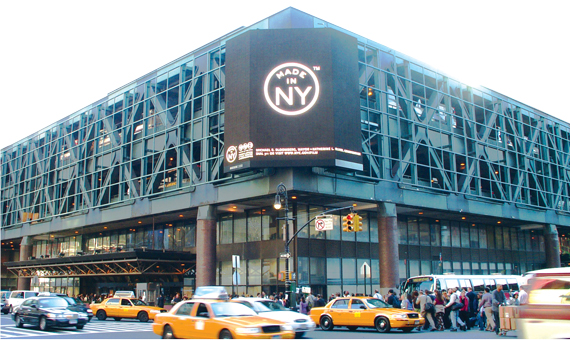Trending
 Pinnacle Bank buys back Fort Worth office tower for $12 per sf
Pinnacle Bank buys back Fort Worth office tower for $12 per sf  Goldman Sachs and Ballast ready to surrender SF apartments to lender
Goldman Sachs and Ballast ready to surrender SF apartments to lender “Multifamily is in the crosshairs”: Execs talk distress, opportunities at Milken conference
“Multifamily is in the crosshairs”: Execs talk distress, opportunities at Milken conference "Financially devastating": Receiver takes over embattled Pembroke Pines condo complex
"Financially devastating": Receiver takes over embattled Pembroke Pines condo complexGovernment briefs
Government briefs

Port Authority paves way for new bus hub
The Port Authority of New York and New Jersey gave the green light to a $70 million planning phase for a new bus depot on Manhattan’s West Side, Bloomberg reported last month. The agency also carved out a 10-year capital plan that will allocate $3.5 billion to replace the current Port Authority terminal. The agency’s officials have estimated that a new transit hub could cost up to $10 billion and take more than a decade to finish. The expansion plan comes as the number of bus commuters to and from Manhattan continues to rise, said Port Authority Executive Director Pat Foye. The terminal currently serves more than 200,000 passengers a day and is functioning beyond capacity, according to Bloomberg.
The city’s new mansion tax crusade
Mayor Bill de Blasio continues to push for a 2.5 percent “mansion tax” on homes sold in New York City for $2 million and up to help fund affordable housing in the boroughs. The mayor tried to rally support for his proposal at an annual conference of minority lawmakers in Albany in mid-February, the New York Daily News reported. Meanwhile, his proposal has met with fierce resistance from the Republican-controlled State Senate. The state currently imposes a 1 percent mansion tax on the sales of homes over $1 million. Luxury developer Toll Brothers [TRDataCustom] recently offered to pay the transfer and mansion taxes on condos purchased in three of its projects under construction to help lure buyers.

Cathedral of St. John the Divine
Local history in the making
The city’s Landmarks Preservation Commission recently voted to approve a new Morningside Heights historic district, with the Cathedral of St. John the Divine receiving individual landmark status. The commission voted unanimously to designate 116 buildings — including the cathedral — from 109th to 119th streets between Riverside Drive and Amsterdam Avenue, according to DNAinfo. In addition, Landmarks released a 3D online map providing information about each building. The new district includes townhouses dating back to the 1800s, along with prewar apartments. More than 60 percent of the buildings were constructed between 1900 and 1910. The area is “defined by its history more so than almost any other neighborhood,” Council member Mark Levine said in a statement.
Show thyself, building address
No, it’s not a speakeasy — it’s just an apartment building without a visible address. The City Council passed a bill in February that requires addresses to be posted at every building entrance, Crain’s New York Business reported. Existing rules only require addresses to be visible at a building’s front entrance. Manhattan Borough President Gail Brewer first introduced the bill in 2004 to avoid confusion among first responders. City Council member Jumaane Williams introduced the latest bill. “For years, New York City’s streets have been like something out of a Harry Potter book, with storefronts and whole buildings that are only easy to find if you already know where they are,” Brewer said in a statement. The bill also increases the initial penalty for failing to properly display addresses to $250 from $25. Property owners are fined an additional $50 per day if the address isn’t posted within 30 days.
